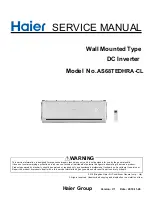
JPR2
P. / 8
EM-580 Rev.2
EXPLANATIONS OF TERMS & FUNCTIONS
■
SCALING FACTOR, INPUT PULSE SET COUNT & OUT-
PUT PULSE SET COUNT
The scaling factor, rate of number of output pulses divided
by number of input pulses, is determined by two param-
eters: input pulse set count and output pulse set count.
The JPR2 output is designed to be proportional in number
of pulses relative to the input. For example, when the pulse
rate is set to 0.0583, the JPR2, provided with 10000 input
pulses, outputs 583 pulses. However, the output is not sup-
plied in a constant frequency. The JPR2 counts the number
of input pulses during the sampling time (period) and stores
it in the internal buffer counter, and provides the number
of output pulses multiplied by the scaling factor for the
number of input pulses, by the end of next sampling cycle.
With the maximum output frequency limit, those pulses ex-
ceeding the limit are still in the buffer and output only in
the following cycle.
■
SAMPLING TIME
The sampling time is defined as a time period required by
the JPR2 to count the input signals for one cycle. With its
factory default setting (0.1 sec.), the output is refreshed
every 100 milliseconds.
This setting is not usually be changed unless for a specific
purpose.
■
MAXIMUM OUTPUT FREQUENCY LIMIT
You can limit the maximum output frequency from the
JPR2.
The JPR2 multiplies the number of input pulses by the scal-
ing factor. However when the output pulses are supplied to
a low-speed response counter, the number of output pulses
(output frequency of the JPR2) may have to be limited with-
in a certain level.
Those surplus pulses remains in the buffer and are output
in the following sampling cycles within the limit.
■
OPERATION
[Example]
Input frequency: 2 Hz
Sampling time: 0.5 sec.
Pulse rate: 3/2
Output pulse width: Duty ratio approx. 50%
Max. output frequency: 1 kHz
1) The JPR2 counts the number of pulses during the sam-
pling time (period). In the example, 1 count in 0.5 sec.
time.
2) Converts the number in the preset rate. In the example,
1 pulse
×
3/2 = 1.5 pulses
3) Outputs the converted pulses in the next sampling pe-
riod. If certain pulses are not output within the time due
to a fraction or the max. output frequency limit, they are
output in the following sampling period. In the example,
1 pulse is output in the second period, two pulses are
output in the third to adjust the fraction.


























